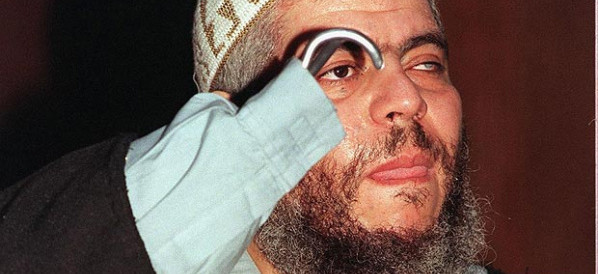 18 Terms
18 TermsHome > Terms > English (EN) > automobiles
automobiles
Among the most pervasive “vehicles” of cultural change in twenty-first-century America is the gasoline-driven, individualized surface road transportation shell first massmarketed by Henry Ford in 1908. While automobiles have become a global phenomenon, they intersected with an American nation growing in wealth, with space to expand, and valuing the freedom, individualism and equality that cars seem to embody. This proved especially true with a car-friendly government that has provided unlimited highways and limited fuel taxes while undercutting mass transit. Cars have altered the American landscape, changed social and family relations, and permeated popular culture from road movies to drive-ins to soccer moms. Since the Second World War, this pervasive presence has also faced critics decrying environmental costs, social changes and dehumanization associated with the centaurial symbiosis of person and car. Any rethinking of this dependency however, faces its sheer normality in a nation where a driver’s license is the most widespread national identity card and where cars are a necessity for all but the most urban (and marginal) of the nation’s citizens.
Mass production (see automakers) rapidly made cars central to the American family.
Registrations increased from 8,000 in 1900 to 8 million in 1920 (and 143 million by 1995). This demanded further changes, including improved roadways and services, urban regulations (and space for parking) and garages and other accommodations in residential areas. While some later critics have seen this as a period of villainous, conspiratorial destruction of mass transit alternatives and face-to-face community, cars also brought together outlying regions and isolated families and housewives on farms and ranches, allowing new explorations of the America glimpsed through mass media. Cars provided privacy for courtship and sex, which have remained important images in American life for decades. Movies, songs and literature celebrate America’s love affair with the car in stories of adventure, glamour, crime and love. Yet, the ambivalence of dependence remains vivid in heart-rending images of impoverished Depression-era families, all their belongings piled into a car, seeking new opportunities in California.
While automobile production and travel were restricted by the Second World War mobilization, cars became fundamental elements of postwar suburban home-ownership, shopping and commut-ing to work. Here, the promise of automotive freedom faced the realities of longer commutes and multiple trips that have plagued sprawling metropolitan development ever since. Acres of parking surrounding shopping malls, churches, schools and other institutions placed competitive demands on urban centers, where garages and parking lots gouged holes in the fabric of urban life. Cars themselves, through the 1950s and 1960s, celebrated an exuberance of display in features including giant tail fins, bright and bi-colored paint jobs, larger motors and new handling. New comfort appeared— bucket seats, air-conditioning, sound and increased vision. In addition, the new car— traded in every year or every other year—was a symbol of American success.
While cars united America, they also divided it. Access to cars depended on money which differentiated basic service vehicles and the luxurious Cadillacs, Lincolns and imported cars. In the twenty-first century, expensive sports utility vehicles, Lamborghini convertibles and third-hand junkers make statements about class (and, for some, about masculinity) every second on streets and highways. Cars also have provided a language of protest—the hot-rod of male teenagers in the 1950s, the multi-colored hippie vans of the 1960s, Cadillacs and other automotive status symbols in African American communities and the Chicano low riders of the 1980s and 1990s all have used massproduced items to express individualism and difference.
In 1973–4 Arab states and other oil-producing countries cut back production and raised prices, which quadrupled gasoline prices at the pump and led to lines and restricted sales.
This oil crisis underscored the vulnerability of American automobile dependence, challenged the nation’s unbounded faith in cars and exploded markets for smaller, fuelefficient and innovative foreign cars. Meanwhile, environmentalists were decrying hydrocarbons and other wastes that created dense clouds of smog over Los Angeles, CA and other cities and befouled waterways, while cars chewed up land for highways and associated development. In the US, motor vehicles are responsible for roughly 70 percent of all carbon monoxide emissions. Almost eclipsed in these concerns are 2 million disabling injuries and 40,000–50,000 deaths each year; cars are the single greatest killer of young people.
Federal regulations on fuel efficiency and emissions controls changed automotive styles, allowing the triumph of imported, more fuelefficient smaller cars. Education, insurance and licensing restrictions, increased penalties (especially on drunk drivers) and collision features, including air bags and child restraints, have worked to make cars safer.
Yet alternative mass transit or transitoriented development faces generations for whom a car is a birthright and whose lives and homes are built around multiple, distant obligations and constant movement. In fact, as more women entered the workplace, juggling family obligations, their mileage quadrupled between 1983 and 1993.
Cars have become homes as well as symbols of the American family—for dating, sex, vacations and community participation (sports, school, church). Hence, in the 1980s and 1990s, many American cars have again become larger (with the popularization of minivans and sports utility vehicles), while adding residential comforts like telephones and VCRs. Continuing costly highway construction and raised speed limits have made more daily trips seem possible, if not desirable, creating trip-chains averaging six trips per household. The “carless,” meanwhile, fall outside this family model. Some are trapped in ghettos far from jobs, while old age (post-driving) brings new dependency on mass transit and social networks.
The car remains central to American mass media. Radio, for example, while still part of home and office, has become a major medium of music and information for drivers (with competing tapes and CDs). Commercial television has been sustained by incessant advertising by automakers jockeying for name recognition and related services like gasoline, insurance and tires. Cars also underpin dramatic and sitcom narratives, including stereotypes of coming of age, gender (women as distracted drivers or nagging passengers) and problematic older drivers. Autos have even taken on character roles in the admittedly awful NBC sitcom My Mother the Car (1965–6), where a car was possessed by the spirit of the hero’s mother or the slicker Knight Rider with its intelligent car. Police series like Highway Patrol (1955–9) and Car 54 Where are You? (NBC, 1961–3) put vehicular references in the title, while Route 66 (CBS, 1960–4; NBC, 1993) made two guys in a ’61 Corvette an American quest. Only westerns and science fiction seemed a respite, although the prehistoric Flintstones (ABC, 1960–6) and the futuristic Jetsons (ABC, 1962–3) adapted family cars to their universes.
Movies have also developed in symbiosis with the car—drawing patrons from ever further ranges and accommodating them with the drive-in in the 1950s and 1960s.
Onscreen, cars may become monstrous—Stephen King’s Christine (1983) explored the passions of a 1953 Plymouth Fury possessed by the devil. Cars have more often become symbols of speed and freedom (Rebel without a Cause, 1955; Thelma and Louise, 1991), family (National Lampoon’s Vacation, 1983), romance and sex (notably in No Way Out, 1987) and class. Whether the fantasy of the Batmobile, the child-like assistance of the Love Bug or dramas of races and chases, cars are ubiquitous.
Many urbanists and planners decry America’s dependence on the automobile and attendant consumption, seeking ways to re-orient cities, families and individuals. Yet, despite public campaigns for new designs, mass transit, car-pooling and even reduced use, cars are built into the fabric of American social life and culture in ways that cannot be altered without fundamental changes. These need to work with rather than against the automobile.
- Part of Speech: noun
- Synonym(s):
- Blossary:
- Industry/Domain: Culture
- Category: American culture
- Company: Routledge
- Product:
- Acronym-Abbreviation:
Other Languages:
Member comments
Terms in the News
Billy Morgan
Sports; Snowboarding
The British snowboarder Billy Morgan has landed the sport’s first ever 1800 quadruple cork. The rider, who represented Great Britain in the 2014 Winter Olympics in Sochi, was in Livigno, Italy, when he achieved the man-oeuvre. It involves flipping four times, while body also spins with five complete rotations on a sideways or downward-facing axis. The trick ...
Marzieh Afkham
Broadcasting & receiving; News
Marzieh Afkham, who is the country’s first foreign ministry spokeswoman, will head a mission in east Asia, the state news agency reported. It is not clear to which country she will be posted as her appointment has yet to be announced officially. Afkham will only be the second female ambassador Iran has had. Under the last shah’s rule, Mehrangiz Dolatshahi, a ...
Weekly Packet
Language; Online services; Slang; Internet
Weekly Packet or "Paquete Semanal" as it is known in Cuba is a term used by Cubans to describe the information that is gathered from the internet outside of Cuba and saved onto hard drives to be transported into Cuba itself. Weekly Packets are then sold to Cuban's without internet access, allowing them to obtain information just days - and sometimes hours - after it ...
Asian Infrastructure Investment Bank (AIIB)
Banking; Investment banking
The Asian Infrastructure Investment Bank (AIIB) is an international financial institution established to address the need in Asia for infrastructure development. According to the Asian Development Bank, Asia needs $800 billion each year for roads, ports, power plants or other infrastructure projects before 2020. Originally proposed by China in 2013, a signing ...
Spartan
Online services; Internet
Spartan is the codename given to the new Microsoft Windows 10 browser that will replace Microsoft Windows Internet Explorer. The new browser will be built from the ground up and disregard any code from the IE platform. It has a new rendering engine that is built to be compatible with how the web is written today. The name Spartan is named after the ...
Featured Terms
Abu Hamza
Abu Hamza, born Mustafa Kamel Mustafa in Alexandria, Egypt, on 15 April 1958. He initially studied civil engineering before leaving for England in ...
Contributor
Featured blossaries
Browers Terms By Category
- Zoological terms(611)
- Animal verbs(25)
Zoology(636) Terms
- Home theatre system(386)
- Television(289)
- Amplifier(190)
- Digital camera(164)
- Digital photo frame(27)
- Radio(7)
Consumer electronics(1079) Terms
- Cooking(3691)
- Fish, poultry, & meat(288)
- Spices(36)
Culinary arts(4015) Terms
- Authors(2488)
- Sportspeople(853)
- Politicians(816)
- Comedians(274)
- Personalities(267)
- Popes(204)




